How to take stunning outdoor photos
Pro photographer Mark Gilligan reveals the secrets of taking cover-worthy outdoor snaps
When I head out into the fells these days, virtually everyone I pass has a camera to hand or strapped to their belt. It’s the latest outdoor add-on. The digital age has given rise to a confidence with photography that allows you to capture a moment. In short, the fear factor has been removed.
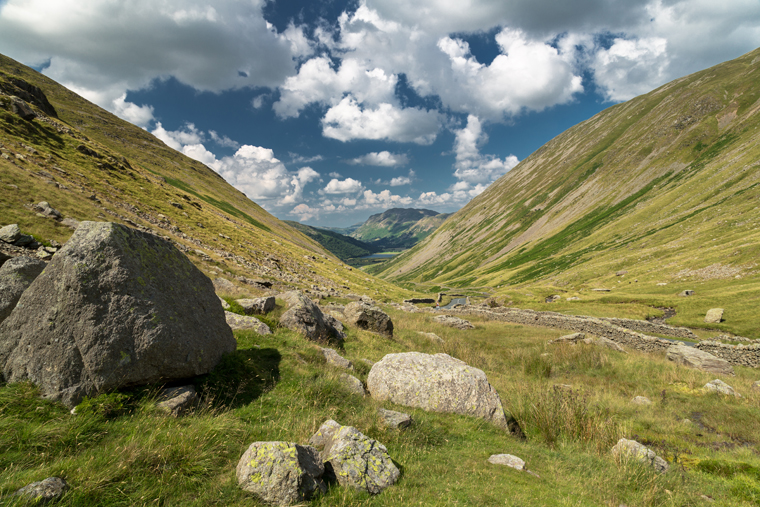
KIRKSTONE PASS ON A SUMMER’S DAY –Keep the sun behind you and let the rocks in the foreground enhance the picture by adding interest
Yet how many reading this are still baffled or disappointed at the results they achieve? Have you ever wondered why you can produce brilliant photos one day and not the next? If you are in the ‘right position’, at the ‘right time’ you can deliver a nicely exposed image. Yet how often are we blessed with being in that situation?
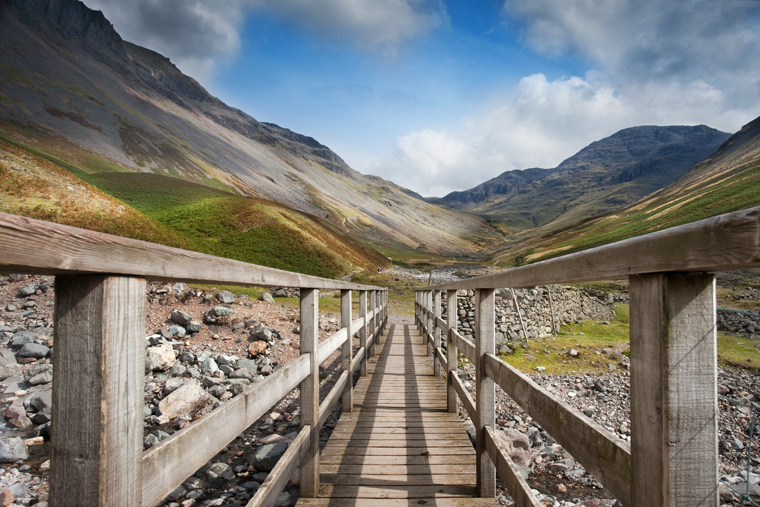
ON THE GABLE BRIDGE Look for lead-in lines to draw the viewer in
The camera is a great capture tool but it just sees light and reacts to it. That’s what it does. It doesn’t actually ‘see’ what you and I see. It can’t marvel at the landscape. Consequently, it needs us to give it a steer to capture that beautiful scene before you. You have to tell it what you want and how to get it. Those buttons and menus are there for a reason.

REFLECTIONS OF ENNERDALE Mirror images always produce a pleasing image. Use a 50/50 technique of framing to illustrate this.
Landscape photography is similar to fishing. The angler has to know how to use their kit in order to get the fish. Similarly, you need to have an understanding of what the camera can do for you. It makes no difference whether that’s a £20k full frame or a £250 point and shoot. There is a principal to photography and understanding the basics is key.
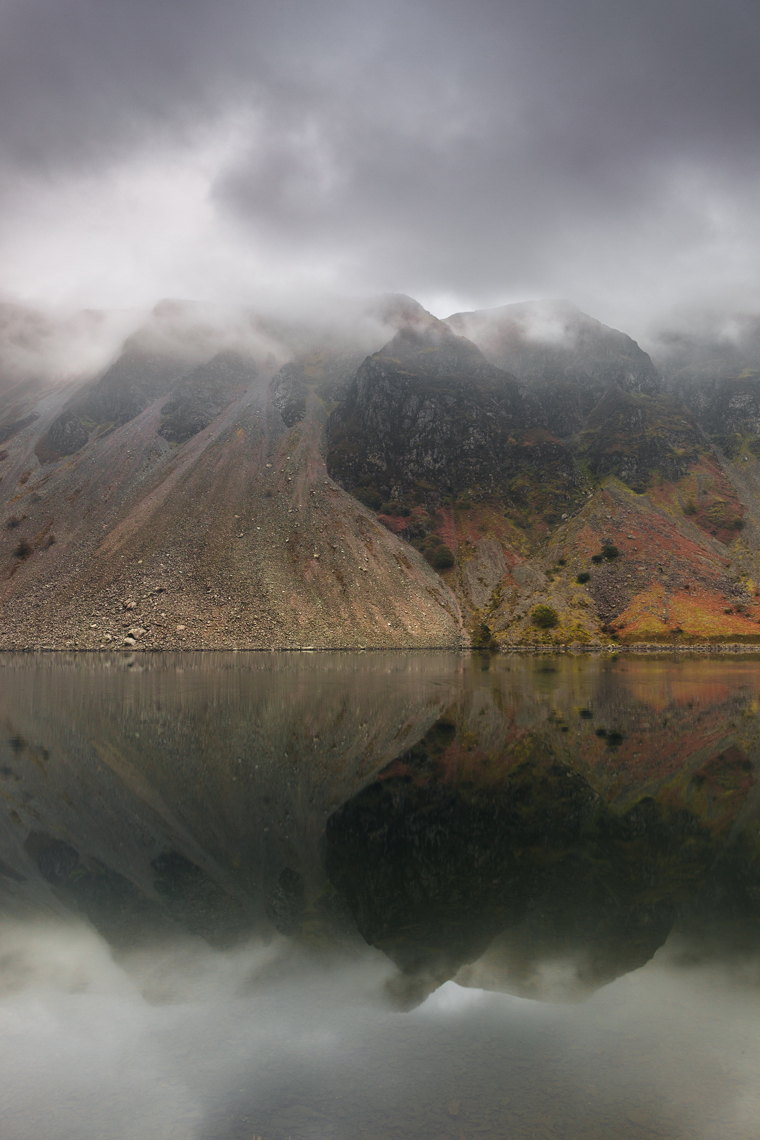
AUTUMNAL SCREES PATTERNS You can take powerful images even on grey days. Seek out the natural patterns that form
Occasionally, I will be met with, “Love your pictures. I wish I had such a good camera!”. That’s a bit like saying to Gordon Ramsey, “Your food is great. Must be a great set of knives and microwaves you have, Gordon”. I think you know how he would respond! In actual fact, I have had covers and illustrated magazine articles with images shot on sub-£300 cameras in recent years.
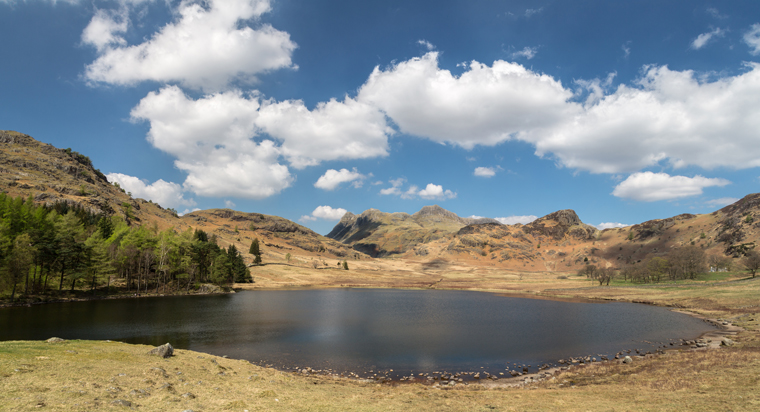
BLEA TARN ON A SUMMER’S DAY – almost a point and shoot on a warm and sunny afternoon. The sun is directly behind the camera.
The main rule is to keep it simple at first and work with the light. Take my photo of the iconic Blea Tarn in the Lake District (see above). I took this on a bright, beautiful day and I knew when the sun would be over my shoulder. All I had to do was compose in the viewfinder then check the aperture, speed and focus. Once done, I ‘clicked’. I know it delivers a balanced and true image of what I saw that afternoon.
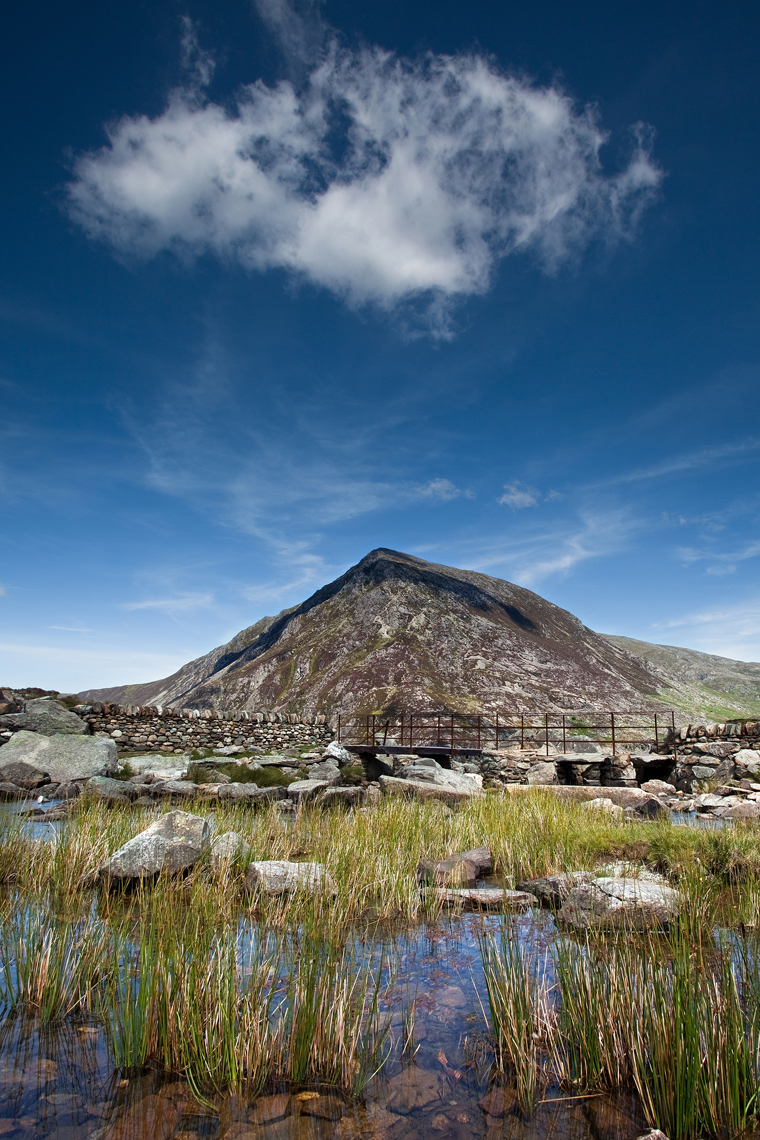
FROM CWM IDWAL Waiting for the cloud to literally sit atop the mountain makes for a much more interesting image
Knowing the location and having the sun or brightest light behind you always helps. That’s my ‘easy’ tip, but we aren’t always lucky enough to be out walking on glorious summer days. So how do you go about getting more consistent results?
For best results
Unlike studio photography, you can’t contrive the light. We work with what we are given and harness it. Here’s how to get the best results:
- Read the manual. They really help you get to grips with shutter, aperture and focusing. Practise with them and check the image on a large screen and not just the LCD on the back of the camera. The more familiar with the kit you become, the better the photographs will be. Go to a local park or any open space and practise in different light, noting what results you get.
- Don’t shoot into the light, and never into a blinding sun either – it can damage your eyes.
- Local knowledge helps. You get to know an areas ‘moods’, sun positions and so on. I will often recce a site before I even take my camera out.
- Always make the picture interesting. It’s a frame you are filling, not a part of it. Look for features that draw the viewer’s eye into the image, such as a road, a fence, a bridge and so forth. I use the phrase ‘compose to expose’. The two go cap in hand and one without the other destroys the photo. It’s no good having a picture that is technically perfect while visually boring or vice versa. Get used to framing the whole of the shot.
- Buy filters, specifically a landscape soft grad kit. Three are all the majority of snappers will need. They balance out the sky and land, ‘burning’ those delicious clouds into the picture.
- Don’t snap away aimlessly. You’ll amass a huge amount of images you won’t want to keep.
- When you get back, download the images as soon as possible and have a back-up hard drive to keep a duplicate set on. You would be surprised how many hard drives suddenly decided they have had enough and become corrupted. It happened to me once. I now have two on the go as well as a cloud-based system
- Processing software is vital. It’s the equivalent of the old darkroom but don’t fall into the trap of over-usage and reliance. You see many pictures on social media sites that are heavily processed with saturation sliders almost on free fall. Processing should be minimal and not the overriding factor. If you get as much done in camera then you will literally just be adding minor tweaks to the picture. The computer is an integral tool in photography today but it should not be the dominant force.
- Enjoy yourself taking photos. It’s a lovely way to create memories and along the way you might just take that award-winning picture!
Buying a camera
Don’t buy a camera because it looks good or have seen someone else’s pictures taken from one. Without sounding condescending, what works for one person might feel like a brick in your hand. Go to a reputable dealership and try a variety of cameras. It is an investment. I rarely change my cameras, so make sure that what you are buying is going to give good value and be fit for purpose.
